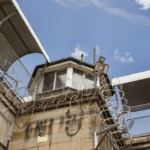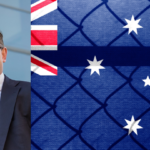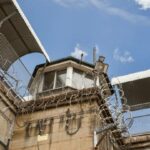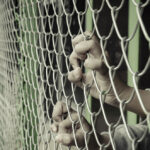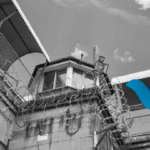Rights Commission Confirms Torture and Abuse Are Rife in Australian Detention
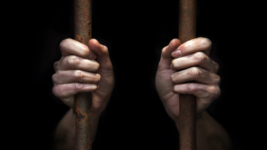
“Australia used to be a world leader in human rights” is a lament that’s often been used over recent decades, as the globe has looked on while successive local governments have illegally detained thousands of foreigners on remote islands in harsh conditions for indefinite periods.
But what’s more startling is that Australia, the so-called lucky country, has always been a rights-denying nation founded on the dispossession and erasure of First Peoples, as well as a plethora of white supremacist policies, and yet, the international community paid next to no attention.
These days, however, the nation has grown notorious due to the barbarity it subjected refugees to after having arrived legally under international law, and the long hidden in plain sight histories of the massacre and institutionalised bastardisation of Aboriginal people has been laid bare.
Indeed, it took Australia 15 years to ratify the OPCAT treaty, which involves a UN-oversighted inspection network designed to prevent rights abuses in places of detention. And ever since this 2017 development, all governments have stalled in applying this policy that protects the detained.
And in concluding its Sixth Periodic Review of Australia late last year, the UN Committee Against Torture has given our nation until December to report on how its applied recommendations made regarding mandatory immigration detention, prison conditions and so-called juvenile justice.
Selective rules-based order
But while it awaits the Albanese government’s response, UN CAT is accepting submissions from civil organisations, which has included a thorough appraisal by the Australian Human Rights Commission that makes it all the more difficult for federal Labor to gloss over its lack of real progress.
As the AHRC submission makes clear, whilst any semblance that Australia respects human rights was destroyed by PM Scott Morrison, under Albanese asylum seekers are still stranded in PNG, indefinite detention is rife, kids as young as 10 are doing hard time, and First Nations people fill the prisons.
Released on 15 September, the AHRC report outlines that in January, 806 days was the average time spent in immigration detention amongst the 1,061 then inside, while hotel rooms are increasingly used as holding cells, and the government has shirked responsibility for the refugees still in PNG.
In terms of prisons, these continue to be dangerous environments both for staff and inmates. And despite making up 3.2 percent of the entire population, First Nations peoples accounted for 31 percent of adult prisoners. And preventable Aboriginal deaths in custody are a regular occurrence.
Grassroots forged reform
But there has been positive movement on criminalising the use of potentially lethal spit hoods, as a ban was enacted two years ago in SA, after the death in custody of Wayne “Fella” Morrison and a subsequent campaign against spit hoods led by his sister, Laytoya Rule, brought their use to an end.
Since April this year, all jurisdictions, besides Western Australia, have imposed operational bans on the use of spit hoods, which have been shown not to serve the previously stated purpose of preventing the spread of transmissible diseases between any hooded inmate and prison guards.
However, as the AHRC underscores because the recent prohibitions operating in other states and territories, which have been established following the victory in South Australia, are administrative policy changes, this means new management could simply reverse the decision.
Extra-curial corrections
The old adage regarding the loss of liberty incurred on entering a correctional centre being the punishment, rather than such facilities being the site for further punishment, may be correct in the conceptual sense, but it’s never been the case on the ground.
In clear breach of the United Nations Standard Minimum Rules for the Treatment of Prisoners, correctional facilities throughout this country continue to use prolonged solitary confinement, which is the isolation of an inmate in a cell for at least 22 hours a day for a period longer than 15 days.
The UN standards, also known as the Mandela Rules, recommend against using solitary confinement on people with disabilities, women and children. However, over in Perth, officers at Banksia Hill child prison have been having a field day using prolonged solitary confinement upon youths.
The other clear abusive behaviour that continues in prisons across the country and is now increasingly being applied increasingly to civilians, are strip searches. These invasive procedures are basically a form of sexual assault by the state, which are designed to humiliate and violate.
The majority of women in prison have suffered physical or sexual abuse during their lives and the imposition of strip searches is retraumatising. However, the simple act of two armed and uniformed strangers ordering someone to strip off, via threat of violence, is traumatising in itself.
And the figures prove that subjecting inmates to strip searches, even children, is simply used to punish, as the WA Inspector of Custodial Services found that over the five years to 2019, only 571 items were found as a result of 900,000 strip searches, which equates to 0.06 percent of cases.
The criminalisation of Indigenous kids
Of course, not all child prisoners in Australia are Indigenous. On an average night last year, 818 youths were locked up in kids gaols, with 56 percent of them nationwide being First Nations children, despite their making up only about 6 percent of the entire populace aged 10 to 17.
Indeed, in the Northern Territory, it’s not that unusual to have 100 percent of children incarcerated by that state being Aboriginal.
Of those 818 youths in prisons on an average 2022 night, 44 were aged from 10 to 13. And up until the 1 August this year, all Australian jurisdictions continued to lock up kids as young as 10. However, from last month, the Northern Territory raised the age of criminal responsibility to 12.
Prison reformists want to see the age raised to 14. And despite the Council of Attorneys General deliberating on whether to continue locking up kids aged from 10 to 13 in mid-2020, the AGs found they needed more time to consider the alternatives.
So, the chief lawmakers in all jurisdictions besides the NT have not got to the point where locking up children aged between 10 and 13 is not permitted, and meanwhile, the overwhelming majority of these youngsters spending their childhoods in gaol are First Nations kids.
Meanwhile, in Queensland, the Palaszczuk government suspended its own Human Rights Act earlier this year to pass laws to ensure more kids are denied bail, and since then, the state has realised that detaining growing numbers of youths in adult watchhouses might have been illegal.
So, Queensland promptly overrode its own HRA a second time to ensure that it could violate the rights of youths in terms of imprisoning them, this time consisting of being held side-by-side adults in facilities. And the new laws apply retrospectively to cover themselves going back to 2021.
The cells in these adult watchhouses are designed to detain adults for one or two days at most, however, in terms of child prisoners, some have been locked up in these conditions for weeks on end.
Maintaining overreach
Former attorney general George Brandis ratified the OPCAT (Optional Protocol to the Convention Against Torture) in December 2017. The then AG determined to do this earlier that same year, about six months after the Don Dale footage revealed adults torturing Indigenous kids to the globe.
OPCAT involves the establishment of the National Preventive Mechanism (NPM), which is a system that sees independent inspections of places of detention with the aim of preventing human rights abuses against detainees, rather than sweeping up after issues have occurred.
These mechanisms are overseen by the UN Subcommittee on the Prevention of Torture (SPT), which is a body made up of 25 independent experts that periodically visit OPCAT compliant nations to inspect their closed environments and provide government with advice.
The UN General Assembly adopted OPCAT in 2002. Our nation signed the protocol in 2009. But it wasn’t until the horrors of the Don Dale expose that Brandis agreed to implement this human rights-forward system of protecting prisoners against abuses.
And for years, state, territory and federal governments then dragged their feet on OPCAT implementation, with funding being a constant focus for stalling progress. And there have been multiple extensions of implementation timeframes, as two deadlines have already been missed.
The most excruciating part of this reluctance to uphold prisoners’ rights is that when the SPT arrived in Australia last October for its first official visit, not only did it find a country lagging behind, but the NSW and Queensland state governments prohibited it entrance to facilities it wanted to inspect.
So, the SPT cut its advisory trip to Australia short.
No movement at the station
“The commission remains greatly concerned about Australia’s continued noncompliance with its obligations under OPCAT,” the AHRC outlined in its report to the UN CAT. “To date, the states of NSW, Queensland, and Victoria are yet to designate a National Preventive Mechanism.”
But on the flipside of that, there is a positive as the Australian National Preventive Mechanism has been established, which is comprised of NPMs from all other jurisdictions, and it has weighed in against the Palaszczuk government’s move to continue locking up children in adult watchhouses.
But as Australia OPCAT Network coordinator Steven Caruana recently observed, the government is refusing to release the report that the SPT submitted to it regarding its failed visit to Australia, whilst at this year’s Standing Council of Attorneys General meeting, OPCAT wasn’t even on its agenda.
“No further progress on implementation, no further funding or legislation, no public SPT report,” Caruana, a long time OPCAT advocate, lamented in a post last week. “OPCAT was ratified in 2017, and we still haven’t reached minimal compliance.”


